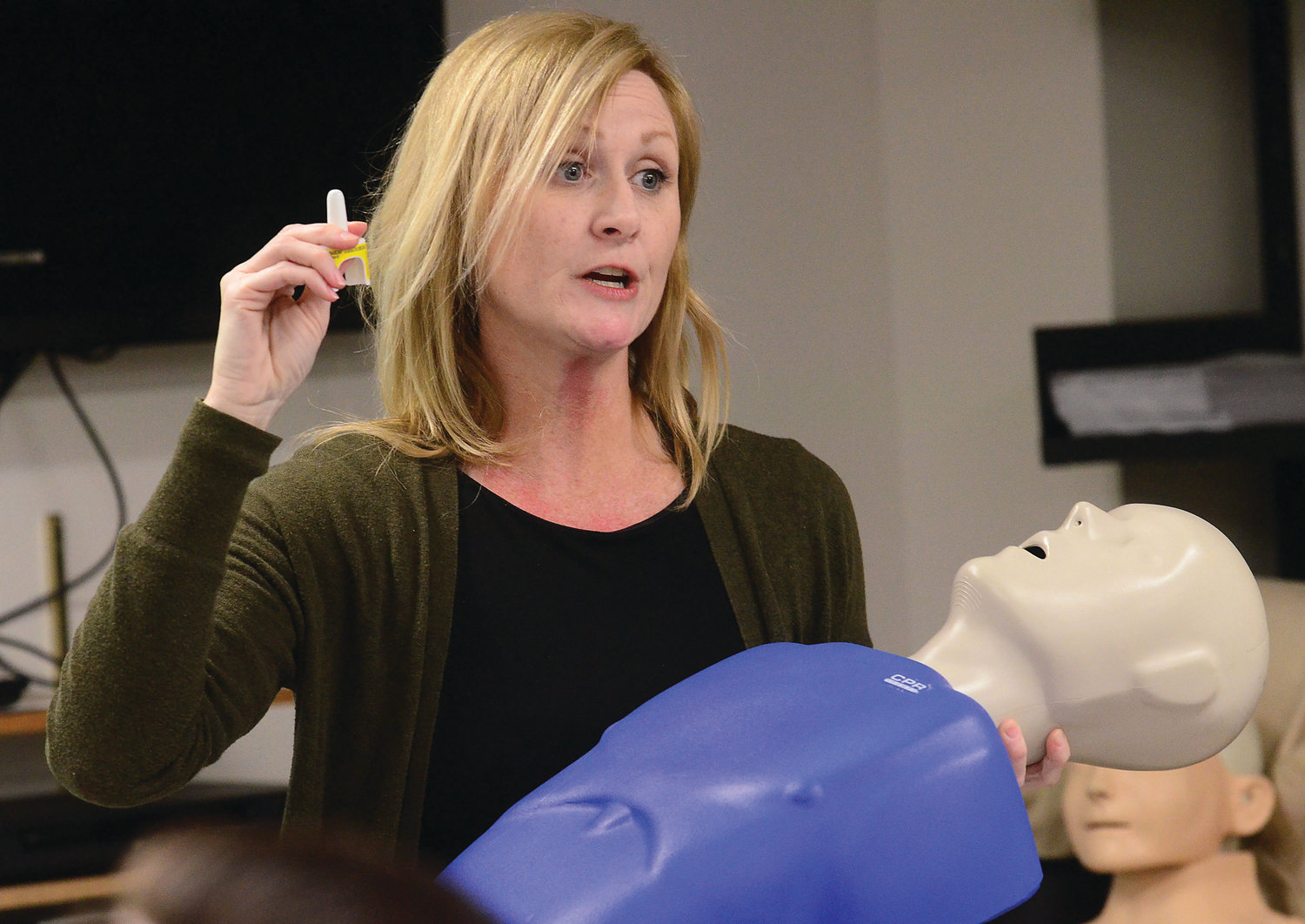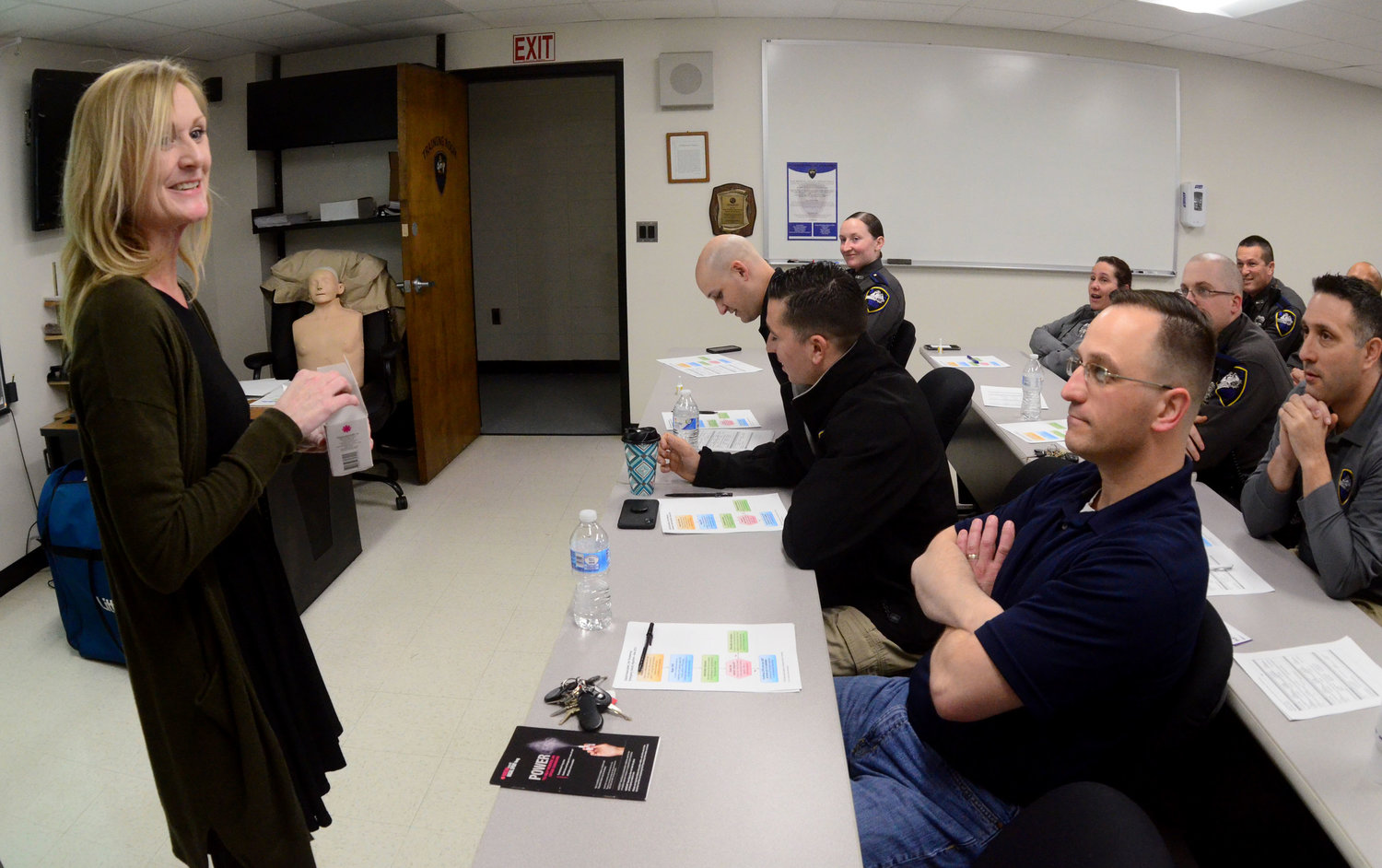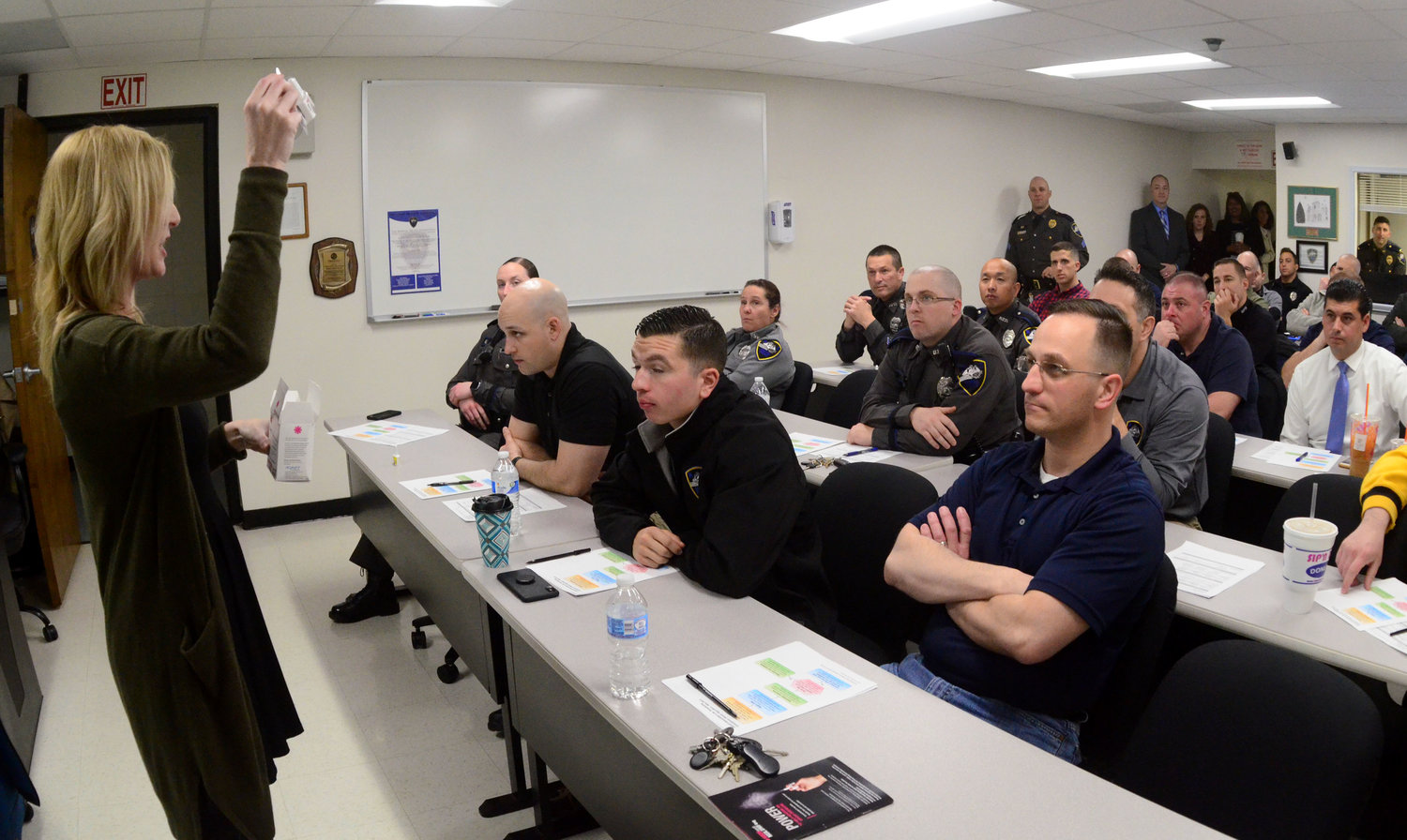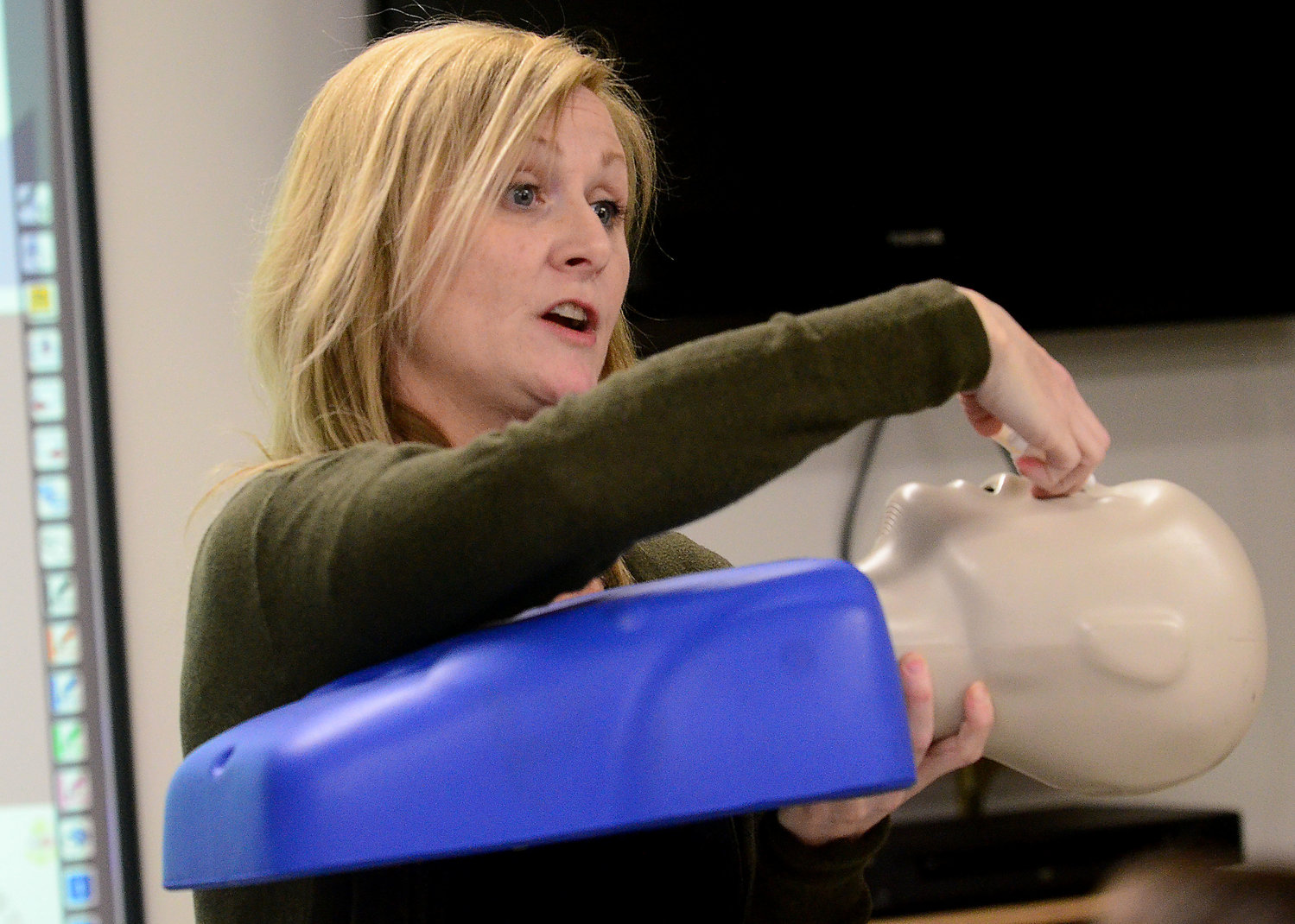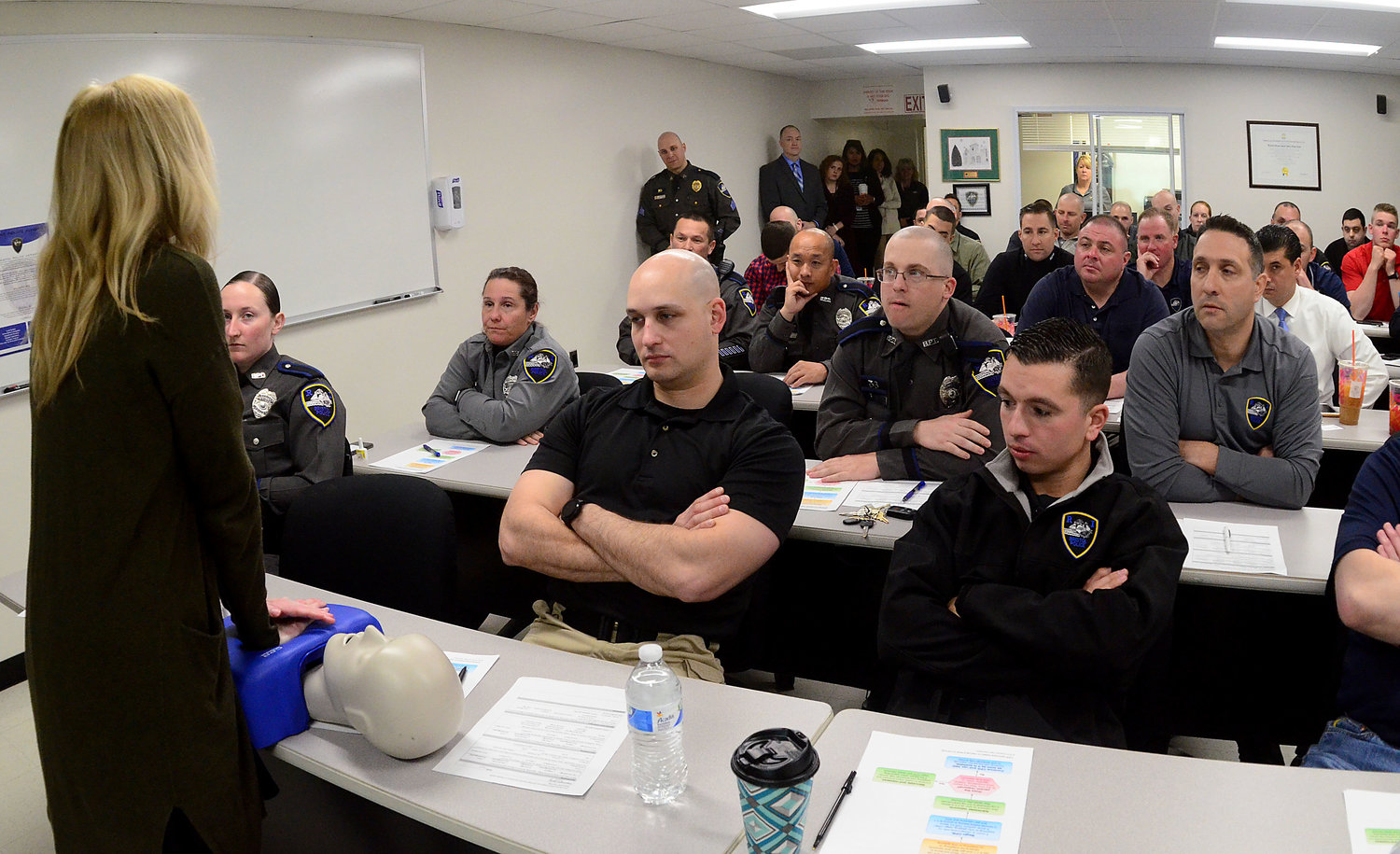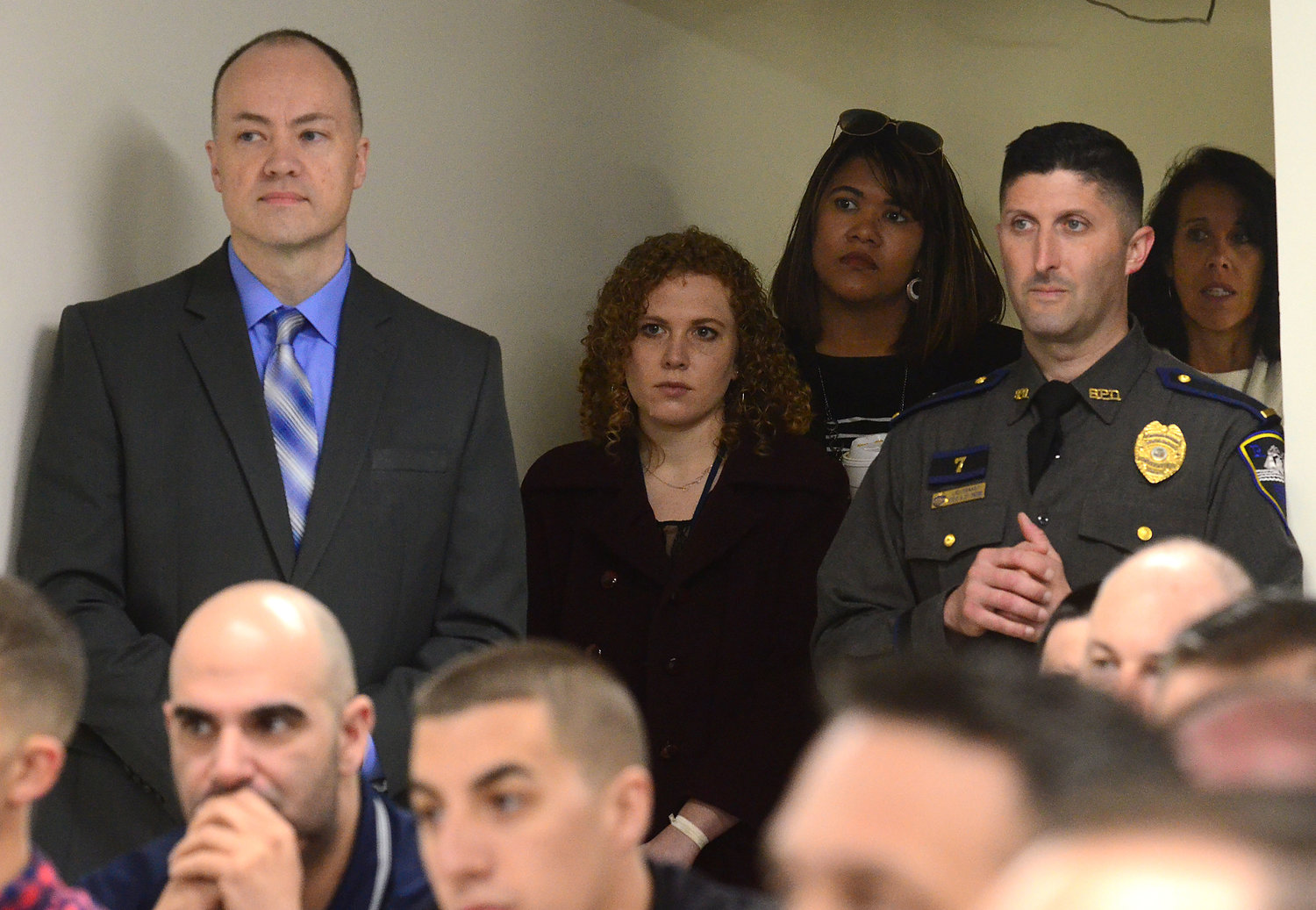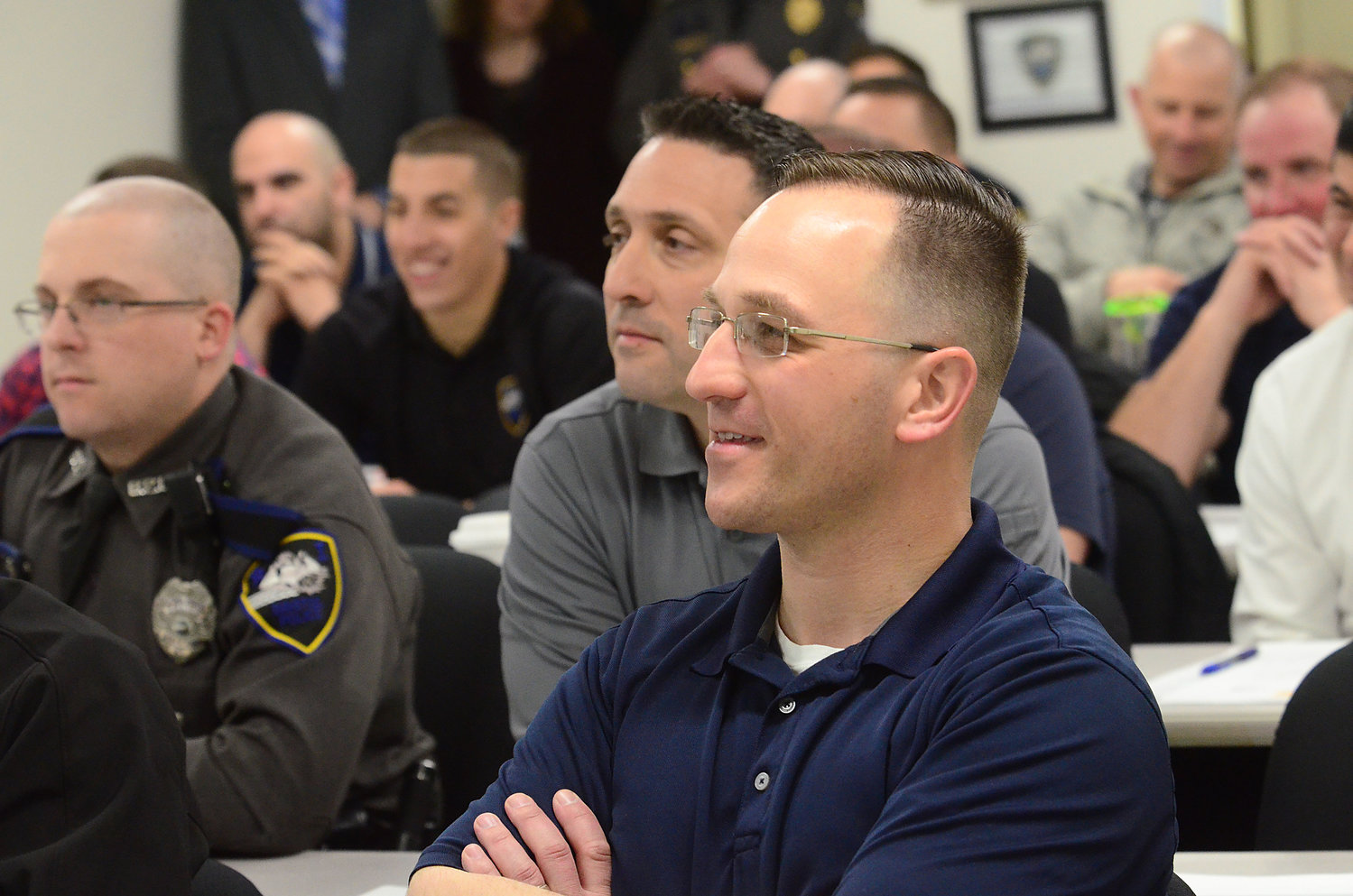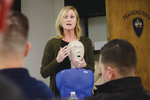- FRIDAY, APRIL 19, 2024
Lifesaving drug in the hands of all Bristol officers
Opioid antidote was handed out to all Bristol Police officers last Friday
In what Chief Brian Peters dubbed one of the “most entertaining” training sessions he’d ever attended, Erin McDonough, director of NaloxBox, an organization that seeks to improve …
This item is available in full to subscribers.
Please log in to continue |
Register to post eventsIf you'd like to post an event to our calendar, you can create a free account by clicking here. Note that free accounts do not have access to our subscriber-only content. |
Day pass subscribers
Are you a day pass subscriber who needs to log in? Click here to continue.
Lifesaving drug in the hands of all Bristol officers
Opioid antidote was handed out to all Bristol Police officers last Friday
In what Chief Brian Peters dubbed one of the “most entertaining” training sessions he’d ever attended, Erin McDonough, director of NaloxBox, an organization that seeks to improve the ability of bystanders to save the lives of victims of opioid overdose, addressed a capacity crowd in the Bristol Police Department’s training room, last Friday, April 12.
Using a CPR dummy and just enough levity to keep the packed house engaged, she laid out the procedure for using the single-dose nasal mist Naloxone that will now be provided to every officer in the department.
Opioid overdose is currently the leading cause of death for all adults under the age of 50 in the United States. The crisis has hit Rhode Island exceptionally hard. According to the National Institute of Drug Abuse (NIDA), in 2017, there were 277 overdose deaths involving opioids in Rhode Island — an age-adjusted rate of 26.9 deaths per 100,000 persons, compared to the average national rate of 14.6 deaths per 100,000 persons.
“A bunch of things came together at once,” said Lt. Steven St. Pierre of the Naloxone roll-out last Friday. “Emily and Laurie deserve so much credit for all their work behind the scenes, communicating their wishes and seeing that there were enough doses for all the officers,” referring to Emily Pearce-Spence of the Bristol Health Equity Zone and Laurie MacDougall of REST (Resources Education Support Together), who worked to ensure this training and Naloxone doses were made available to the Bristol police.
There has been some misinformation in the community about Naloxone (aka Narcan) and whether or not Bristol police carried the lifesaving drug. According to Lt. St. Pierre, the department has been moving in this direction since 2017, when officers had access to the drug through supervisors’ vehicles. This new policy is a dramatic improvement over the old, as not only does everyone have their own dose that they carry with them, but the old policy, with Naloxone left in medical bags in cruiser trunks, left the drug exposed to degradation caused by temperature extremes.
“The new chief has been extremely supportive” of this new policy, according to Lt. St. Pierre. Further, the new policy serves to support department efforts to regain federal and state accreditation, because it formalizes a policy for Naloxone distribution. “To regain accreditation, we need a policy for every action,” said Lt. St. Pierre.
Both Chief Peters and Lt. St. Pierre noted that this push to carry Naloxone was largely officer-driven. “We have had lots of feedback from officers; they wanted more access” to the drug, said Lt. St. Pierre. While there are many possible motives, one, no doubt, was the exposure just last month of three Portsmouth first-responders to Fentanyl.
Ms. McDonough emphasized fear, largely media-driven, has overblown the dangers of second-hand exposure to Fentanyl, whether inhaled or topical contact (on unbroken skin). She suggested that, while remaining vigilant, the best course of action, and the one most likely to keep first-responders safe in the vast majority of cases, was simply using gloves and washing hands with soap and water.
In addition to the ability to reverse overdoses and save lives , the Bristol Police have a longstanding agreement with East Bay Mental Health, as well as the year-old recovery center located in the St. Michael’s Church Parish Hall on Hope Street, to refer overdose victims to recovery services.
“East Bay Mental Health has a 24-hour hotline service that can connect a person with a recovery coach within the day,” said Lt. St. Pierre. He emphasized the importance of a local resource when it comes to getting someone with opiate use disorder into recovery. In the past, transport to the hospital most often resulted in a Providence-based referral, a distance that people struggling with addiction might find insurmountable.
Thankfully, opioid overdose deaths are trending downward, and have been for the past several years. As someone on the front lines, both as a first-responder, task force member and someone who monitors and reports on these instances locally, Lt. St. Pierre can see the big picture. He knows this latest department policy change will help both Bristol, and Rhode Island, improve their ability to fight this public health crisis. “We’ve gotten better as a state,” Lt. St. Pierre said. “We’re moving in the right direction.”
Other items that may interest you

